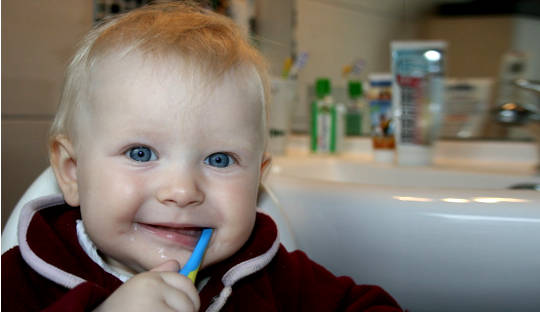
A revolution in how we think about preventing cavities in children is upon us. Evidence shows that cavity formation has less to do with genetics, candy habits or poor brushing, and more to do with the types of snack foods we give children. Counter-intuitively, dark chocolate is better for teeth than pretzels or crackers.
Tooth decay in our country's young children has increased to epidemic proportions over the past 30 years and is now a public health crisis. A study by the American Academy of Pediatric Dentistry shows that tooth decay is now the most common chronic childhood disease in the U.S. Clearly, decades-old advice that focuses on brushing, flossing and sugar consumption isn't enough to keep children away from the needle and drill.
Diet is the Culprit
Exploring the biochemistry of how cavities form reveals that diet--even more than oral hygiene--is the true culprit. Snack foods we commonly give to young children that are heavy in simple carbohydrates, such as dry cereal, crackers and dried fruit, convert to lactic acid, which wears away tooth enamel and causes cavities. Limiting processed flours and other simple carbs is the secret to 100-percent cavity prevention. That's right: zero cavities.
This new approach through diet first now gives parents successful tools for cavity prevention. And the good news is they don't require any radical overhaul to the family's diet.
Follow these five prevention principles of a zero cavities program for your child--as well as older children and adults:
1. Switch to teeth-friendly foods.
Simply put: foods with fat, protein and fiber don't cause cavities. Foods with simple or processed carbohydrates do.
Opt to give your child only whole foods (make oatmeal instead of giving processed cereals) and low-carbohydrate snacks (string cheese and apple slices). You don't have to cut all sugar in the diet to be cavity-free--just be strategic. For example, switching from milk chocolate to 70-pecent dark chocolate, which has a higher fat content, lower sugar and even some chemicals that may strengthen enamel, is a teeth-friendly choice.
2. Establish regular eating instead of grazing.
Think in terms of: carb-rich foods, plus time on teeth, equals cavities. If you allow your child to graze on high-carb snacks or sip juice or milk through the day--or to have a bottle with milk or juice at night or naptime--you're creating the formula for a mouth full of cavities. Teeth stay coated in cavity-producing acid for too many hours.
Establish six "minimeals" a day and feed your child only at these organized meal and snack times.
3. Make water the drink of choice.
The saying that "the solution to pollution is dilution" holds true in the mouth.
Drinking water immediately after meals and snacks is a simple way to reduce cavity worry. Also, only offer water between meals when your child is thirsty.
4. Protect baby teeth.
While children will eventually lose their baby teeth, any cavities in baby teeth need to be treated. Baby teeth may begin falling out at age 5 or 6, but children keep their back molars until ages 10-12.
Preventing cavities in baby teeth through diet removes the trauma for everyone involved.
5. Brush and floss teeth daily.
Brushing and flossing to remove the bacteria that breaks down simple carbs into cavity-causing lactic acid is key to cavity prevention. Children need help from a parent to brush their teeth properly until the age of 5 or 6. With young children, parents can let the child start the brushing, then finish with a "perfect" brushing for 20 or 30 seconds.
At age 6 or 7, let children transition to brush on their own. Have them brush for 2 minutes twice a day. Floss between any teeth that touch.
©2016 by Roger W. Lucas.
Book by this Author
 More Chocolate, No Cavities: How Diet Can Keep Your Kid Cavity-Free
More Chocolate, No Cavities: How Diet Can Keep Your Kid Cavity-Free
by Dr. Roger W. Lucas DDS.
Click here for more info and/or to order this book.
About the Author
 Dr. Roger Lucas, DDS, has created a new way of thinking about cavity prevention that is a diet-first, practical approach. With a degree in biochemistry from the University of Washington, he uses the laws of nutrition and microbiology to simplify getting zero cavities. As a practicing pediatric dentist north of Seattle, he has helped thousands of families achieve zero cavities. As a dad, he can make it practical. His first book, More Chocolate, No Cavities (CreateSpace, March 2016), will help change the way people think about cavities and keep children away from the needle and drill. Learn more at:www.thedentistdad.com.
Dr. Roger Lucas, DDS, has created a new way of thinking about cavity prevention that is a diet-first, practical approach. With a degree in biochemistry from the University of Washington, he uses the laws of nutrition and microbiology to simplify getting zero cavities. As a practicing pediatric dentist north of Seattle, he has helped thousands of families achieve zero cavities. As a dad, he can make it practical. His first book, More Chocolate, No Cavities (CreateSpace, March 2016), will help change the way people think about cavities and keep children away from the needle and drill. Learn more at:www.thedentistdad.com.






















